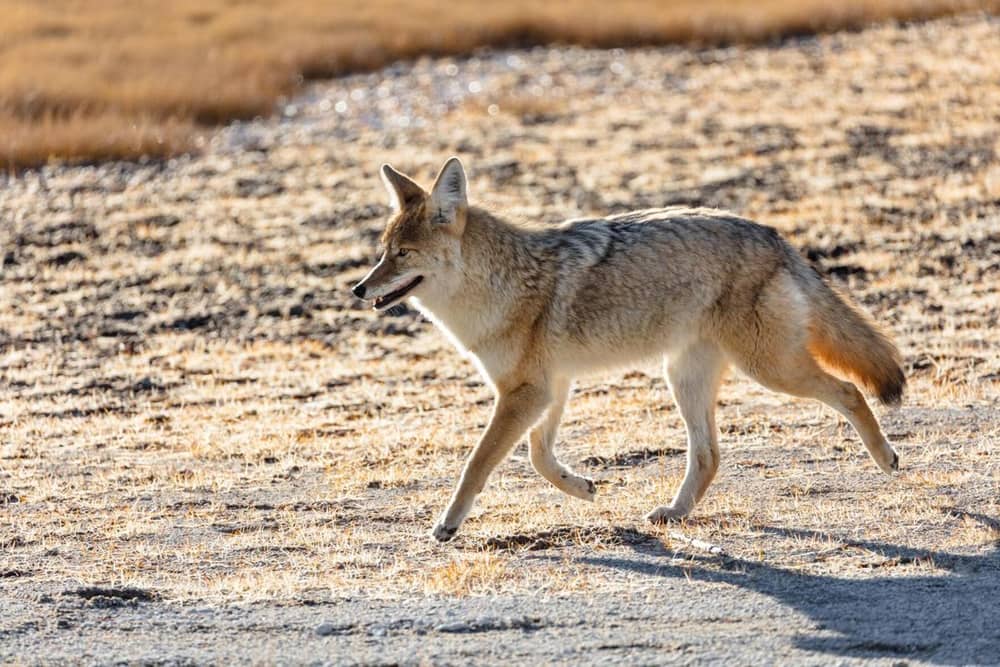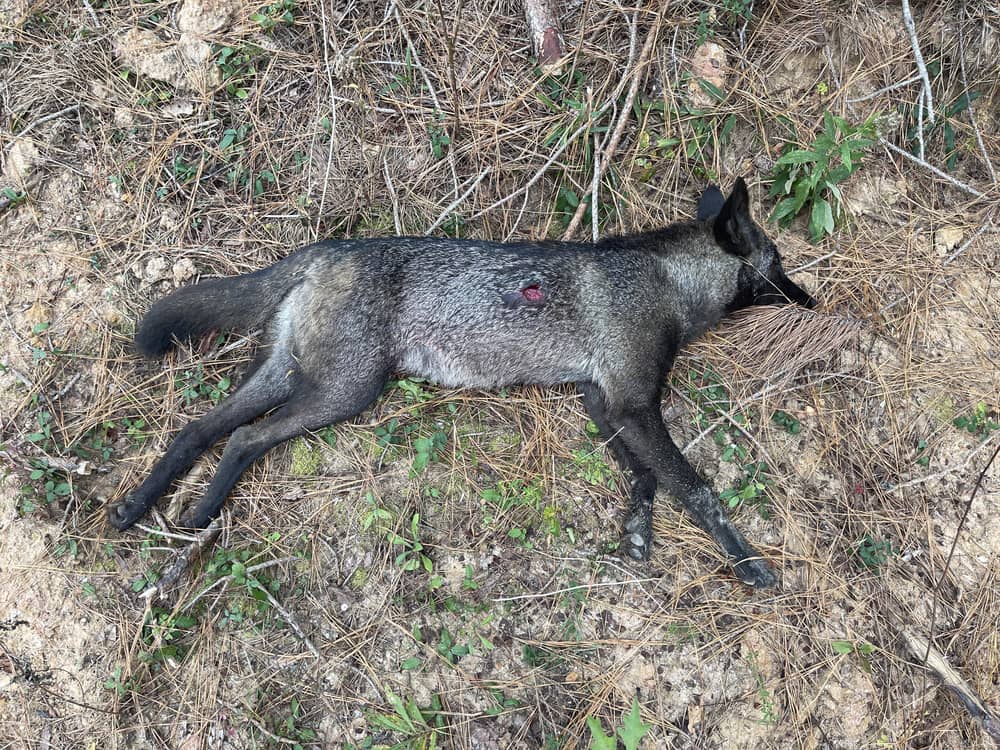Coyote encounters can occasionally provide difficulties and safety issues. To save livestock, pets, or people’s safety, it may occasionally be necessary to shoot a coyote. Understanding the responsible steps to take after such an activity is vital, though. So, what to do with a coyote after you shoot it?
The major reason hunters shoot coyotes is for population management. Coyotes are rapidly colonizing portions of North America. As a result, hunters shoot them to prevent them from preying on other animals.
After you’ve dispatched them, you have several options. It is determined by your personal preferences as well as the legislation in your location. Typically, after killing a coyote, hunters tan the hide and either use the fur or sell the hide. In this article, we’ll discover more about what hunters do after killing coyotes.
Table of Contents
What To Do With A Coyote After You Shoot It?

After shooting a coyote, handle the issue professionally and dispose of the remains properly. Here are some things to think about and things to do after shooting a coyote:
Ensure Your Safety
After you’ve dealt with the immediate threat, prioritize your own and the safety of others around you. Before continuing, ensure that there are no outstanding hazards.
Legal And Regulatory Compliance
Learn about local restrictions governing the disposal of coyote carcasses. Contact your local wildlife agency or law enforcement to learn about the unique restrictions in your area. Different jurisdictions may have different rules about reporting an event or acquiring licenses.
Documentation
In many circumstances, taking photographs or writing notes about the experience is recommended. This paperwork may be required for legal purposes or when reporting the incident to the appropriate authorities.
Contact The Appropriate Authorities
You may need to call local wildlife agencies or animal control authorities depending on the restrictions in your area. They can offer advice, information, and aid with the coyote carcass.
Making Use Of The Carcass
The carcass of a coyote can be used in several instances. It may be feasible, for example, to give the body to educational or research institutions. They could be interested in studying the animal’s behavior, biology, or other scientific topics. Inquire with local universities, research facilities, or wildlife rehabilitation centers about their requirements and any prospective arrangements.
Apply The Fur
When hunters kill coyotes, they frequently skin and use the hide to produce various items. However, hunters are slowly abandoning the practice of tanning furs. Coyotes are being intentionally trapped by trappers for their fur, which will be sold. Coyote hunters who do decide to save their fur are rewarded with luxurious, robust fur that has a variety of uses.
Gather Bounties
In an effort to control the expanding populations, numerous states and provinces have recently instituted coyote bounties.
Both livestock and wildlife are susceptible to damage from coyotes. Coyote populations can become so large that they can annihilate other creatures trying to occupy the same territory.
They can even outcompete wolves and kill lots of fawns. A lot of livestock is also killed by coyotes. When coyote populations reach a certain level, governments will set a bounty on them to try to stop any further damage from occurring. A hunter can turn in the scalp or pelt it to the appropriate authorities along with the required paperwork and documentation to get payment.
Make Aesthetic Thing
Antlers can be found lining the walls of any hunter’s home. To keep the memory of the hunt fresh, hunters like to mount their kills.
When an animal is killed, hanging it on the wall is a terrific technique to help the hunter remember the hardship they went through to get that animal.
The animal does, of course, also have aesthetic value, particularly if it’s in a rural setting. Animal mounts are frequently seen in upscale hotels and eateries.
Coyotes are mounted by hunters, typically as a full-body mount. especially if the search was difficult or the creature is remarkable.
Disposal
If you are unable to use the item in another way, it should be properly disposed of to avoid luring scavengers and reduce the risk of spreading disease. Burying the carcass on your land is a choice that is possible in rural places where it is legal. However, it’s crucial to adhere to any regional regulations regulating burial depth and distance from water sources.
What Can You Use Coyote Meat For?

Due to a number of factors, coyote meat is typically not used extensively for human food. Coyotes are technically edible, but there are a number of things to take into account:
Texture And Flavor
Many people don’t like the pungent, gamey flavor of coyote meat. The flavor is frequently characterized as musky and can be extremely strong. Coyote meat also has a tendency to have a rough, chewy texture.
Health Issues
Because coyotes are wild creatures, eating their flesh has some health hazards. Coyotes, like other wild animals, could harbor maladies, parasites, or other illnesses that are dangerous to people. If you opt to eat coyote meat, using the right preparation methods is crucial, such as thorough cooking to get rid of any dangerous viruses.
Legal and Ethical Considerations
Coyote hunting and trapping are frequently prohibited activities, and particular permits or licenses can be necessary. Regarding animal hunting and consumption, it’s crucial to abide by local rules and ordinances.
Cultural and Social Factors
The majority of Western societies do not typically view coyotes as a food source. There may be opposition or cultural discomfort to the concept of eating their meat.
Given these factors, it is relatively uncommon to use coyote meat for human consumption. Coyote meat, however, may be consumed as food in some cultures or communities with a history of hunting and eating wild animals.
Final Thoughts
Finally, after killing a coyote, you must handle the carcass with care. Observe local laws, get in touch with the proper authorities if necessary, and think about using fur or donating instead of other materials. In order to avoid attracting scavengers and reduce the chance of contracting a disease, hunters must also use suitable disposal techniques. We may manage coyote events successfully if we take a responsible approach to the matter. Additionally, this supports the preservation of the ecosystem and cooperation between people and wildlife.

